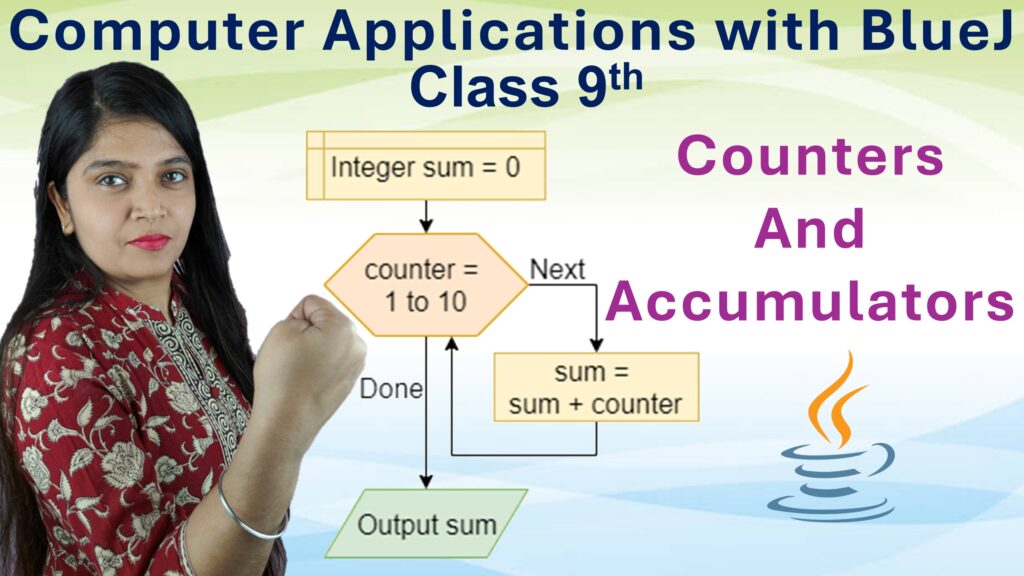Exercise: 4-A
Q1: In a two-digit units digit is four times the tens digit and the sum of the digits is 10. Find the number.
Step 1: Let the ten’s digit be: \(x\)
Then, the unit’s digit is: \(4x\)
Step 2: Given: The sum of the digits is 10:
\[
x + 4x = 10
\]Step 3: Add the like terms:
\[
5x = 10
\]Step 4: Solve for \( x \):
\[
x = \frac{10}{5} = 2
\]Step 5: So, the ten’s digit is:
\[
x = 2
\]
and the unit’s digit is:
\[
4x = 4 \times 2 = 8
\]Step 6: Therefore, the number is:
\[
28
\]Answer: The required number is 28.
Q2: The units digit of a two-digit number is 3 and seven times the sum of the digits is the number itself. Find the number.
Step 1: Let the ten’s digit = \( x \),
Then the number = \( 10x + 3 \) (since ten’s digit contributes ten times)
Step 2: Sum of digits = \( x + 3 \)
Step 3: Given:
Seven times the sum of the digits = the number
\[
7(x + 3) = 10x + 3
\]Step 4: Expand both sides:
\[
7x + 21 = 10x + 3
\]Step 5: Bring like terms together:
\[
7x – 10x = 3 – 21 \\
\Rightarrow -3x = -18
\]Step 6: Solve for \( x \):
\[
x = \frac{-18}{-3} = 6
\]Step 7: So the ten’s digit is:
\[
x = 6
\]
And the unit’s digit is given as:
\[
3
\]Step 8: Hence, the number is:
\[
10x + 3 = 10 \times 6 + 3 = 60 + 3 = 63
\]Answer: The required number is 63.
Q3: In a two-digit number, the digit at the units place is thrice the digit in the tens place. The number exceeds the sum of its digits by 27. Find the number.
i. Let the ten’s digit be \( x \), then the unit’s digit = \( 3x \)
Step 1: Let the ten’s digit be:
\[
x
\]
Then the unit’s digit is:
\[
3x
\]Step 2: The number formed = \( 10x + 3x = 13x \)
Step 3: Sum of digits = \( x + 3x = 4x \)
Step 4: According to the question:
\[
\text{Number} = \text{Sum of digits} + 27 \\
13x = 4x + 27
\]Step 5: Solve the equation:
\[
13x – 4x = 27 \\
\Rightarrow 9x = 27 \\
\Rightarrow x = \frac{27}{9} = 3
\]Step 6: So the ten’s digit = 3
Then the unit’s digit = \( 3 \times 3 = 9 \)
Step 7: Therefore, the number is:
\[
10 \times 3 + 9 = 30 + 9 = 39
\]Answer: The required number is 39.
Q4: A two-digit number is 3 more than 4 times the sum of its digits. If 18 is added to the number, its digits are reversed. Find the number.
Step 1: Let the ten’s digit be \( x \), unit’s digit be \( y \)
Then the number is:
\[
10x + y
\]Step 2: Sum of digits = \( x + y \)
Step 3: Given:
The number is 3 more than 4 times the sum of its digits:
\[
10x + y = 4(x + y) + 3
\]Step 4: Expand RHS:
\[
10x + y = 4x + 4y + 3
\]Step 5: Bring like terms together:
\[
10x – 4x + y – 4y = 3 \\
\Rightarrow 6x – 3y = 3 \tag{1}
\]Step 6: Given: If 18 is added, the digits are reversed:
The reversed number = \( 10y + x \)
\[
10x + y + 18 = 10y + x
\]Step 7: Rearranging:
\[
10x – x + y – 10y = -18 \\
\Rightarrow 9x – 9y = -18 \\
\Rightarrow x – y = -2 \tag{2}
\]Step 8: Solve equations (1) and (2):
From (2): \( x = y – 2 \)
Substitute in (1):
\[
6(y – 2) – 3y = 3 \\
6y – 12 – 3y = 3 \\
3y – 12 = 3 \\
3y = 15 \Rightarrow y = 5
\]Then from (2):
\[
x = 5 – 2 = 3
\]Step 9: Therefore, the number is:
\[
10x + y = 10 \times 3 + 5 = 30 + 5 = 35
\]Step 10: Verify:
Sum of digits = 3 + 5 = 8
4 × sum = 32; 32 + 3 = 35
35 + 18 = 53, which is reversed number
Answer: The required number is 35.
Q5: The sum of the digits of a two-digit number is 13. The number obtained by interchanging its digits exceeds the given number by 9. Find the original number.
Step 1: Let the original number be:
\[
10x + y
\]Then, the number with digits interchanged is:
\[
10y + x
\]Step 2: Given:
Sum of digits = \( x + y = 13 \) → (1)
Also given:
The interchanged number exceeds the original by 9:
\[
10y + x = 10x + y + 9 \tag{2}
\]Step 3: Rearranging Equation (2):
\[
10y + x – 10x – y = 9 \\
(10y – y) + (x – 10x) = 9 \\
9y – 9x = 9 \Rightarrow y – x = 1 \tag{3}
\]Step 4: From (3): \( y = x + 1 \)
Substitute in (1):
\[
x + (x + 1) = 13 \Rightarrow 2x + 1 = 13 \Rightarrow 2x = 12 \Rightarrow x = 6
\]Step 5: Then, \( y = x + 1 = 6 + 1 = 7 \)
Step 6: So, the original number is:
\[
10x + y = 10 \times 6 + 7 = 60 + 7 = 67
\]Step 7: Verification:
Sum of digits = \( 6 + 7 = 13 \)
Interchanged number = 76, and
\[
76 – 67 = 9
\]Answer: The original number is 67.
Q6: The difference between a 2-digit number and the number obtained by interchanging its digits is 63. What is the difference between the digits of the number?
i. Let the ten’s digit be \( x \), and the unit’s digit be \( y \)Step 1: The original number is:
\[
10x + y
\]
The number after interchanging the digits is:
\[
10y + x
\]Step 2: Given:
The difference between the two numbers is 63:
\[
| (10x + y) – (10y + x) | = 63
\]Step 3: Simplify the expression:
\[
| 10x + y – 10y – x | = 63 \\
| 9x – 9y | = 63 \\
\Rightarrow 9 |x – y| = 63
\]Step 4: Divide both sides by 9:
\[
|x – y| = \frac{63}{9} = 7
\]Answer: The difference between the digits is 7.
Q7: In a 3-digit number, the hundreds digit is twice the tens digit while the units digit is thrice the tens digit. Also, the sum of its digits is 18. Find the number.
i. Let the ten’s digit be \( x \), then:Step 1: Let the digits be:
– Ten’s digit = \( x \)
– Hundreds digit = \( 2x \)
– Unit’s digit = \( 3x \)
Step 2: Sum of digits = \( 2x + x + 3x = 6x \)
Step 3: Given:
\[
6x = 18 \Rightarrow x = \frac{18}{6} = 3
\]Step 4: So,
– Ten’s digit = \( x = 3 \)
– Hundreds digit = \( 2x = 6 \)
– Units digit = \( 3x = 9 \)
Step 5: Therefore, the number is:
\[
\text{Hundreds place: }6,\ \text{Tens place: }3,\ \text{Units place: }9 \\
\Rightarrow 639
\]Answer: The required number is 639.







Leave a Comment